Shimano TR60 & R170 shoes
This is our review of two 2013 Shimano cycling shoes. While not my usual style, I’ll start off by telling you what’s wrong with the shoes. Is it the sizing? The weight? The stiffness? In my opinion, Shimano does all of the basics right. My beef is with the names. I imagine it’s due in part to the fact that Shimano makes an astounding number of products… but call me crazy for not being inspired by “SH-R170”. My advice for consumers (and what seems to be popular among retailers) is to shorten the name. The SH-R170 is called the “170”. The SH-TR60? I’d just call it the TR60. That simplifies things, but I still secretly hope that we eventually get some real names.
My branding nit-picks aside, I think Shimano does have a couple very nice products here. Let’s take a closer look.
SH-TR60 triathlon shoe
The TR60 is the newest high-end tri shoe from Shimano. It sits above the TR31.
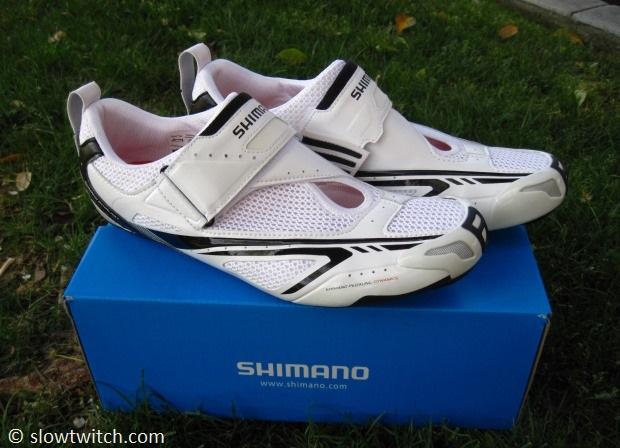
The TR60 has Shimano Dynalast carbon soles. They sell shoes on a continuum of stiffness; the TR60 scores a perfect 10:
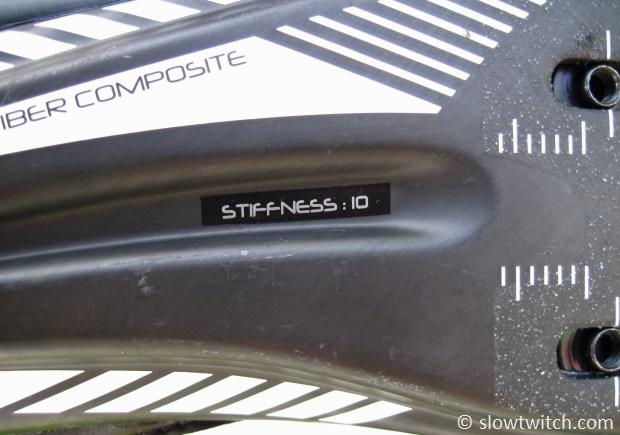
While I didn’t have a lower-scoring Shimano shoe to compare this to, I can confidently say that the soles feel plenty stiff to me.
As you would expect, Shimano shoes support standard 3-hole cleat placement (including Shimano’s own cleats). Speedplay pedals require the use of their 3-bolt-to-4-bolt adapter plates. There are several markers on the sole for accurate cleat placement.
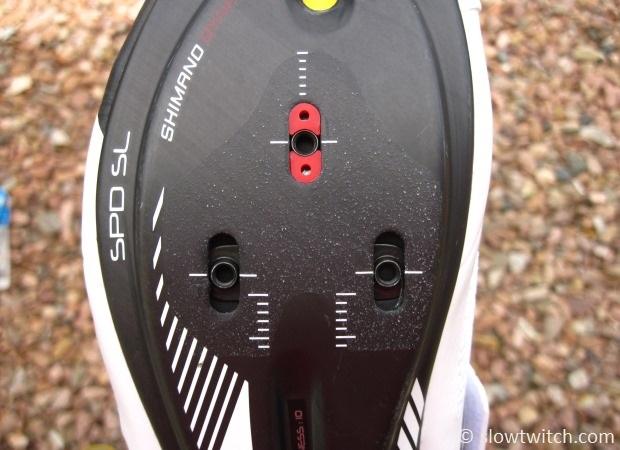
Note that the cleat holes allow for very good rearward cleat placement; the farthest back I’ve seen on a mass-market shoe. Of course, I haven’t tried every shoe in the king’s land. I can say that these shoes allow for further rearward cleat placement than Specialized Trivents and Mavic Tri Heliums; the two tri shoes I’ve spent the most time with. While rearward cleat placement is not on every triathlete’s wish list, my sense is that if the market’s cleats – as a whole – are traveling one way on our feet… it’s towards our heels. I’ve talked to many more athletes who have their cleats all the way back on their shoes vs all the way forward.
Similar to some other brands’ tri shoes, the large main strap wraps towards the inside of your foot. The strap can be trimmed to length to avoid interference with your bike’s cranksarms:
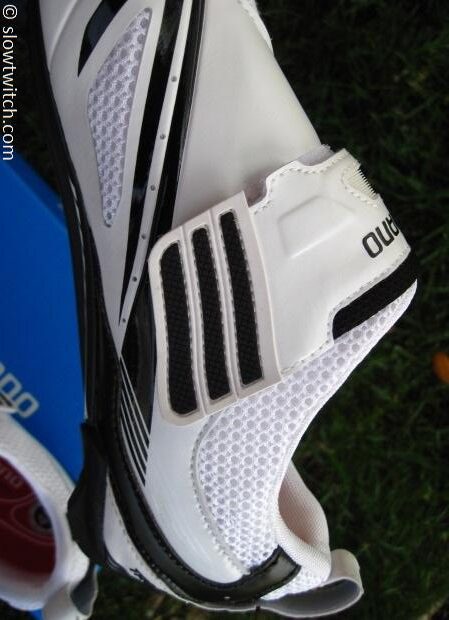
Straps also bring up my only real criticism of the shoe itself. This one is truly subjective, so don’t assume that you’ll feel the same way if you haven’t tried these shoes on. What’s the deal? There is only one strap. You get a very large main Velcro strap and nothing else. Some athletes I’ve spoken with prefer this. Personally, I don’t feel as secure in the shoe. As you bring the crank arm up and dorsi flex your foot, I like to feel like my foot isn’t going anywhere inside the shoe (similar to why people like relatively stiff soles in their shoes – for pushing down). I imagine that this is also affected by the length of your foot and the size of your shoe. A women’s size 38 is much shorter than a men’s size 48, and likely does not need a second supporting strap as much. I wear a men’s size 45, and would really like to have a second strap.
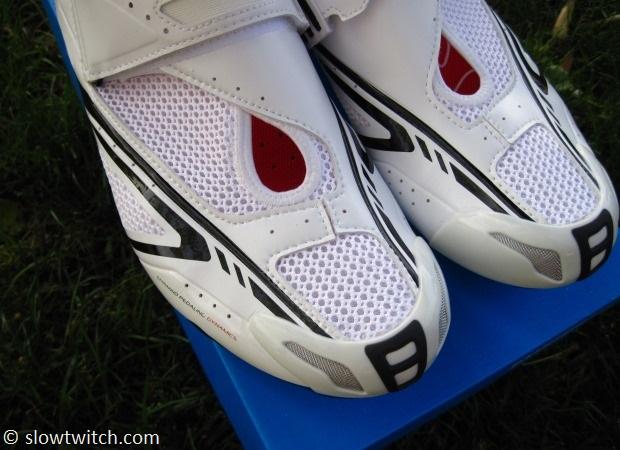
Speaking of sizing, I found that these shoes fit very true to size. I’ve worn EU 45 in a handful of other shoes, and these fall in line. My Specialized Trivents are 45, my Mavics are 45 1/3, and my Vivobarefoot minimalist shoes are 45.
Shimano gets all of the other details right. There is the requisite sole drain hole and matching insole:
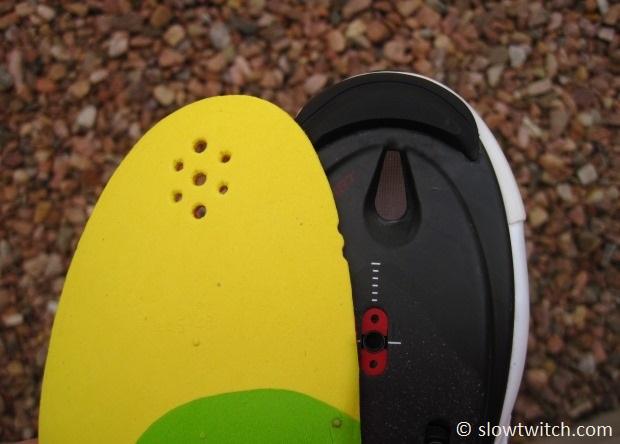
Note that these shoes are compatible with, but do not include, Shimano’s heat-moldable insoles.
There is also the expected rear loop for quick transitions:
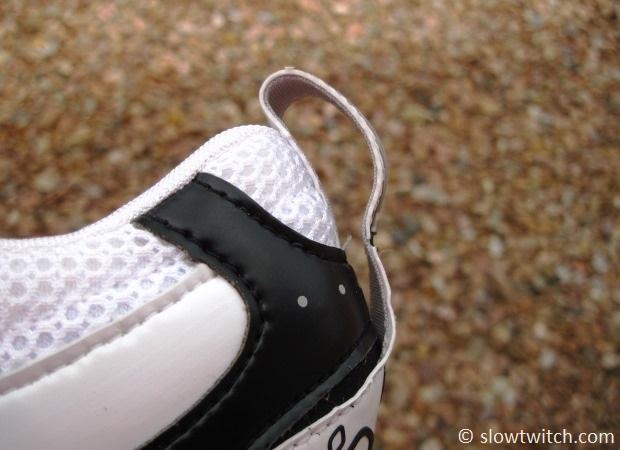
Overall, I think Shimano is offering a lot of shoe for $250. That’s no chump change, but the product is good. The insoles are very comfortable, the soles are stiff, and they look good. Weight – for the weenies – is quoted at 502g for size EU 40.
SH-TR170 road shoe
The 170 is the new middle-ground “high value, reasonable price” shoe from Shimano, at $200. Similar to the TR60’s shown above, the 170 is compatible with their heat-moldable insoles – but they are not included from the factory.
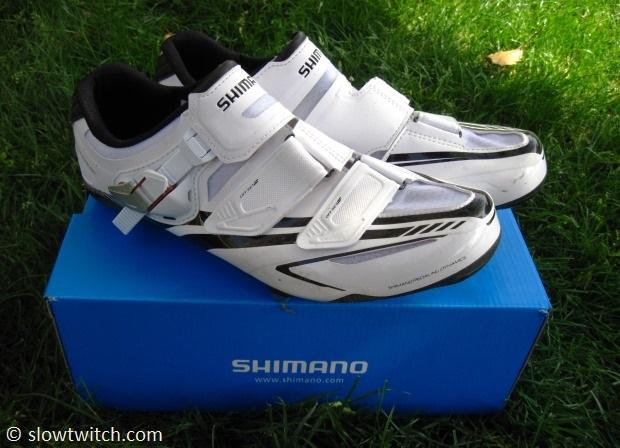
I won’t spend as much time writing about the 170’s, but I actually found myself wearing them more than the TR60’s. My criticism of the TR60’s lack of secure feel during the upstroke completely vanishes with the 170. It has two Velcro straps and a large ratcheting buckle, seen here:
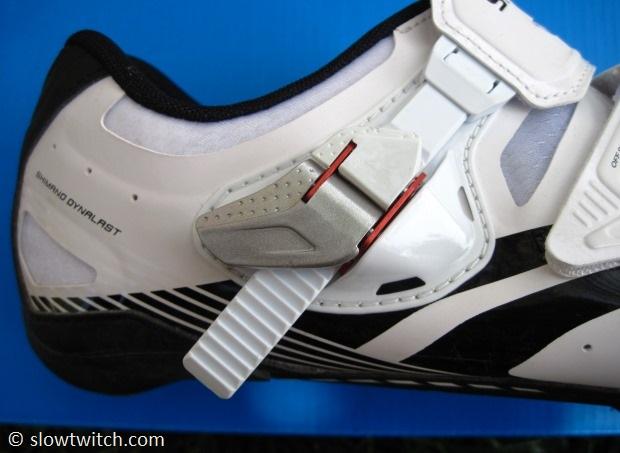
The ratchet is simple, effective, and very secure. Before testing these shoes, I’d ridden in triathlon-specific shoes for ALL road riding for the past couple years. I’d owned ratcheting road shoes in the past, but just didn’t feel like I needed to buy another pair. Tri shoes work fine, don’t they? I dare say that the TR170 converted me back. They simply feel great.
Straps aside, the look and feel of the TR170 is very similar to the TR60. They have the same Dynalast soles with a ‘10’ in rated stiffness. They have the same rearward-friendly cleat placement. They fit true-to-size in my EU 45. Weight is a shade lower than the TR60, at 500 grams for size 40.
If I was in the market for a road shoe, the TR170 would be very high on my list. I’m not the kind of guy with the desire (or budget) to buy $400 shoes, and these are right up my alley.
New 2013 cleat option
In the past, Shimano has offered two cleat choices – red and yellow. The red is a fixed cleat (zero float), and the yellow is a floating cleat (6 degrees of float). This year, Shimano introduced a third cleat, which is blue.
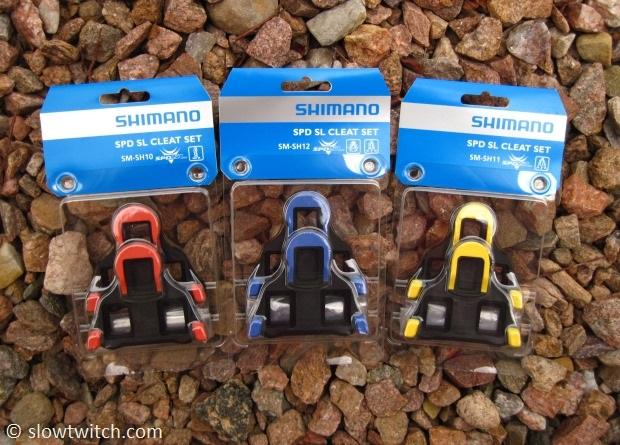
The blue cleat falls in between the yellow and red, offering two degrees of float.
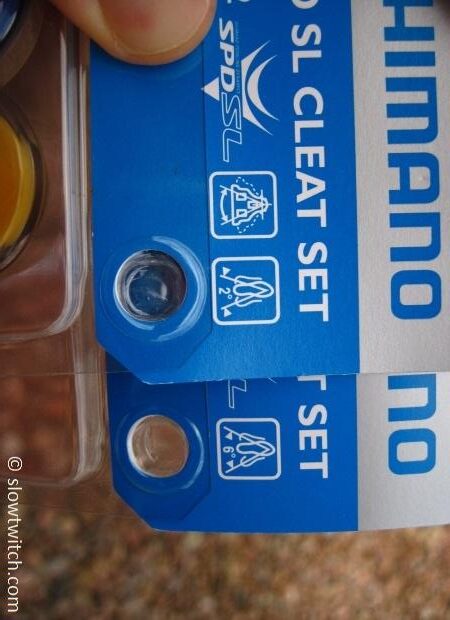
The graphic above also shows that the cleat not only has less float than the yellow – it also pivots from a different point. The yellow cleat rotates around its center, allowing your toes to move left and right. The blue cleat pivots from the toe.
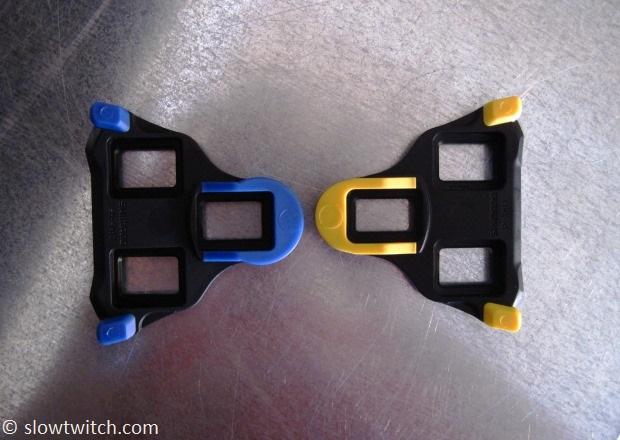
The front of the blue cleat actually looks quite similar to the fixed red cleat.
I have been a long time Shimano yellow cleat user. After riding the blue cleats for about six weeks, I found a new favorite. I don’t notice the different pivot point so much as a more secure feeling. I haven’t yet tried the red cleats. Some argue that fixed cleats transfer power more efficiently than floating cleats, and that floating cleats are easier on your knees. Perhaps the blue cleat is the perfect middle ground between these two priorities. I can't say for sure, but I definitely like them.
—
All images © Greg Kopecky / slowtwitch.com



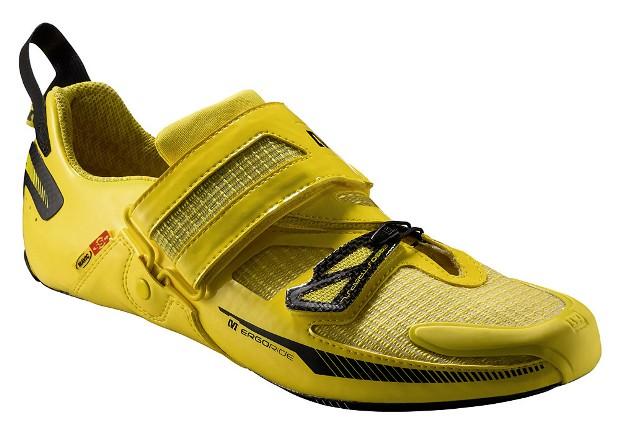
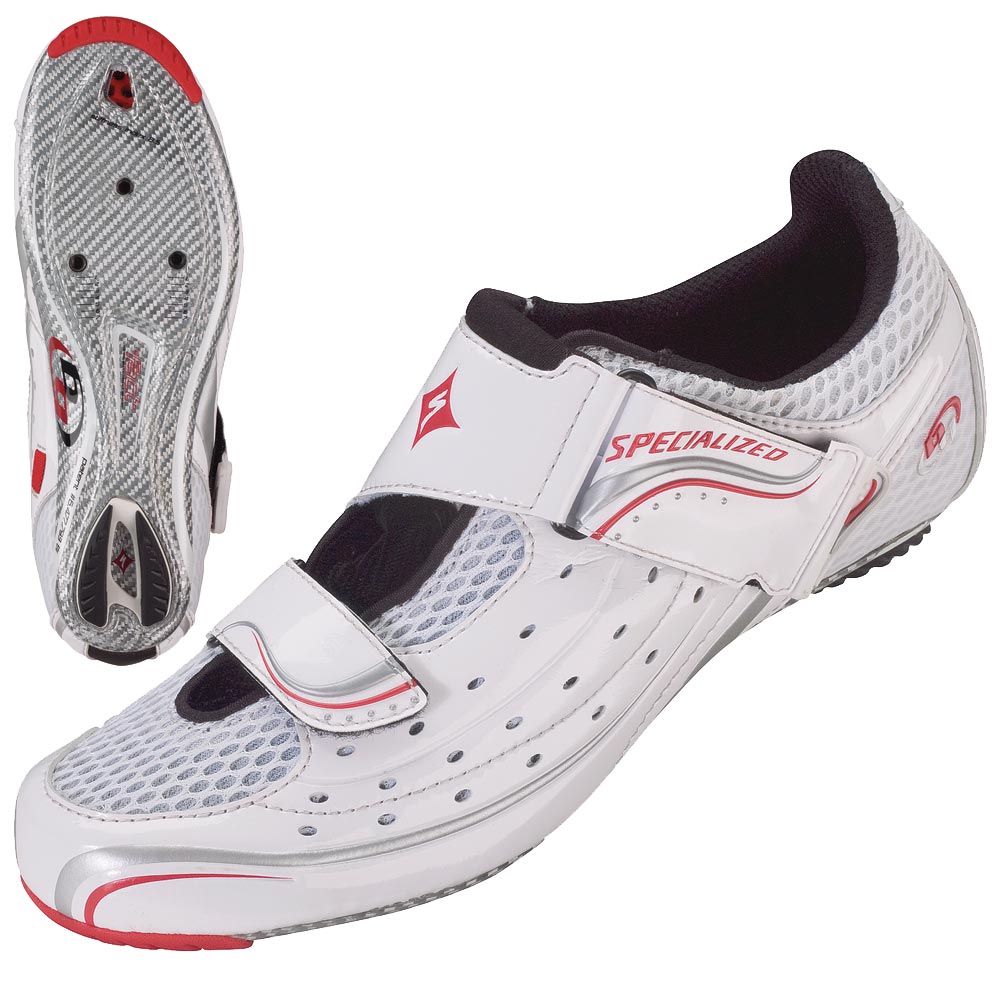
Start the discussion at forum.slowtwitch.com